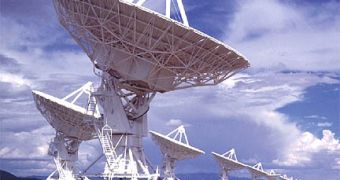These are the questions astrophysicists are approaching at the Sound of Silence conference at the Arizona State University, after about five decades of listening to radio signals coming from outer space. Either extraterrestrials don't exists, are to far away and can't hear us, not intelligent enough to hold radio technology, or simply too preoccupied with their own problems to engage chatter with us, one thing is clear for now. We have not detected a single intelligent radio transmission coming from space, or those we have found were from instruments we built.
Let's look on the bright side of things, though. We know at least that it's working, right? In order to simplify the evaluation process, astrophysicists need to cut out some of the variables of the problems. Not having intelligent enough aliens, the fact that they might not exist, or that they are too far away come out of the problem right from the beginning. Otherwise why would we look for something that isn't there?
Conference organizer Paul Davies says that we, as humans, are approaching the problem from a wrong angle. Instead of just listening, we should talk more. Nonetheless, I would like to point out that we have been sending unwillingly radio signals into space ever since the invention of the radio, more than a century ago. We certainly should have got a response by now.
What if aliens are doing the same thing? Just listening for radio signals all day, where would that get us? We would all just sit listening for each others signals, but nobody is doing the talking. Also, the the channels used by SETI are simply too narrow for such a mammoth task, as it only listens for the frequencies in the radio quiet zone of the universe. Quite a big mistake, if you consider the whole span of the radio spectrum, according to astrophysicist Paul Davies.
The SETI project has been initiated in the 1960s by Cornell University astronomer Frank Drake, under the name Project Ozma. Ever since, SETI has been making multiple detection, all coming from man-made instruments. The only signal yet unaccounted for is the 'WoW' signal from 1977, mostly due to the fact that it has disappeared soon after the detection and a accurate location of its source could not be made.
It currently consists of multiple radio telescopes scattered around the world, and processes the signals through one of the biggest network of home personal computers, totaling 320,000 devices provided by five million volunteers supporting the Institute. The facility opened last year the first of 42 radio telescopes, which will compose the Allen Telescope Array. Dr Seth Shostack argues that with the upgrades received in the last years, the SETI Institute will be able to process as much information in two years as all data analyzed during its whole activity, and in two decades we would have scanned more than a million star systems.

 14 DAY TRIAL //
14 DAY TRIAL //